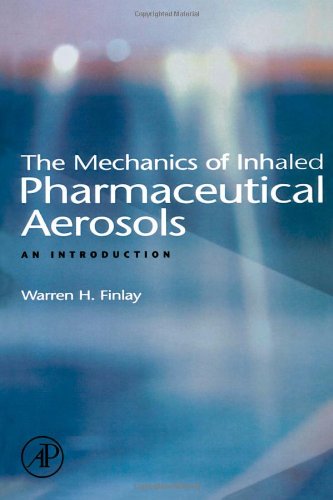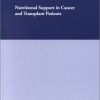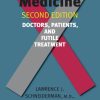The Mechanics of Inhaled Pharmaceutical Aerosols An Introduction 1st Edition by Warren Finlay ISBN 9780080511375 0080511376
$50.00 Original price was: $50.00.$35.00Current price is: $35.00.
The Mechanics of Inhaled Pharmaceutical Aerosols An Introduction 1st Edition by Warren Finlay – Ebook PDF Instant Download/Delivery: 9780080511375 ,0080511376
Full download The Mechanics of Inhaled Pharmaceutical Aerosols An Introduction 1st Edition after payment

Product details:
ISBN 10: 0080511376
ISBN 13: 9780080511375
Author: Warren Finlay
The Mechanics of Inhaled Pharmaceutical Aerosols, An Introduction provides a unique and comprehensive treatment of the mechanics of inhaled pharmaceutical aerosols. The book covers a wide range of topics and many new perspectives are given by drawing on research from a variety of fields. Novel, in-depth expositions of the most common delivery devices are given, including nebulizers, dry powder inhalers and propellant metered dose inhalers. The behaviour of aerosols in the respiratory tract is explained in detail, with complete coverage of the fundamentals of current deposition models.
The book begins by providing a comprehensive introduction to aspects of aerosol mechanics that are relevant to inhaled pharmaceutical aerosols. It then gives an exhaustive pedagogical description of the behaviour of evaporating and condensing droplets (both aqueous and propellant-based), an introductory chapter on lung geometry and inhalation patterns, and coverage of relevant aspects of fluid mechanics in the lung. Finally, the book provides invaluable, detailed coverage on the mechanics of common pharmaceutical aerosol delivery systems and deposition in the respiratory tract. Throughout the book are many detailed numerical examples that apply the salient concepts to typical inhaled pharmaceutical aerosols.
This book will be of interest to scientists and engineers involved in the research and development of inhaled pharmaceutical aerosol products. Experienced practitioners will find many new perspectives that will greatly enhance their understanding of this complex and rapidly growing field. For those delivering therapeutic agents to the lung, this book is a must-have. Students and academics will find this book an invaluable tool and for newcomers it is a worthy guide to the diverse fields that must be understood to work in the area of inhaled pharmaceutical aerosols.
The Mechanics of Inhaled Pharmaceutical Aerosols An Introduction 1st Edition Table of contents:
Chapter 1. Introduction
Chapter 2. Particle Size Distributions
2.1 Frequency and count distributions
2.2 Mass and volume distributions
2.3 Cumulative mass and volume distributions
2.4 Other distribution functions
2.5 Summary of mean and median aerosol particle sizes
Chapter 3. Motion of a Single Aerosol Particle in a Fluid
3.1 Drag force
3.2 Settling velocity
3.3 Drag force on very small particles
3.4 Brownian diffusion
3.5 Motion of particles relative to the fluid due to particle inertia
3.6 Similarity of particle motion: the concept of aerodynamic diameter
3.7 Effect of induced electrical charge
3.8 Space charge
3.9 Effect of high humidity on electrostatic charge
Chapter 4. Particle Size Changes due to Evaporation or Condensation
4.1 Introduction
4.2 Water vapor concentration at an air–water interface
4.3 Effect of dissolved molecules on water vapor concentration at an air–water interface
4.4 Assumptions needed to develop simplified hygroscopic theory
4.5 Simplified theory of hygroscopic size changes for a single droplet: mass transfer rate
4.6 Simplified theory of hygroscopic size changes for a single droplet: heat transfer rate
4.7 Simplified theory of droplet growth or evaporation of a single droplet whose temperature is cons
4.8 Use of the constant temperature equation for variable temperature conditions and a single drople
4.9 Modifications to simplified theory for multiple droplets: two-way coupled effects
4.10 When are hygrosopic size changes negligible?
4.11 Effect of aerodynamic pressure and temperature changes on hygroscopic effects
4.12 Corrections to simplified theory for small droplets
4.13 Corrections to account for Stefan flow
4.14 Exact solution for Stefan flow
4.15 When can Stefan flow be neglected?
Chapter 5. Introduction to the Respiratory Tract
5.1 Basic aspects of respiratory tract geometry
5.2 Breath volumes and flow rates
Chapter 6. Fluid Dynamics in the Respiratory Tract
6.1 Incompressibility
6.2 Nondimensional analysis of the fluid equations
6.3 Secondary flow patterns
6.4 Reduction of turbulence by particle motion
6.5 Temperature and humidity in the respiratory tract
6.6 Interaction of air and mucus fluid motion
Chapter 7. Particle Deposition in the Respiratory Tract
7.1 Sedimentation of particles in inclined circular tubes
7.2 Sedimentation in alveolated ducts
7.3 Deposition by impaction in the lung
7.4 Deposition in cylindrical tubes due to Brownian diffusion
7.5 Simultaneous sedimentation, impaction and diffusion
7.6 Deposition in the mouth and throat
7.7 Deposition models
7.8 Understanding the effect of parameter variations on deposition
7.9 Respiratory tract deposition
7.10 Targeting deposition at different regions of the respiratory tract
7.11 Deposition in diseased lungs
7.12 Effect of age on deposition
7.13 Conclusion
Chapter 8. Jet Nebulizers
8.1 Basic nebulizer operation
8.2 The governing parameters for primary droplet formation
8.3 Linear stability of air flowing across water
8.4 Droplet sizes estimated from linear stability analysis
8.5 Primary droplet formation
8.6 Primary droplet breakup due to abrupt aerodynamic loading
8.7 Primary droplet breakup due to gradual aerodynamic loading
8.8 Empirical correlations
8.9 Droplet production by impaction on baffles
8.10 Degradation of drug due to impaction on baffles
8.11 Aerodynamic size selection of baffles
8.12 Cooling and concentration of nebulizer solutions
8.13 Nebulizer efficiency and output rate
8.14 Charge on droplets produced by jet nebulization
8.15 Summary
Chapter 9. Dry Powder Inhalers
9.1 8asic aspects of dry powder inhalers
9.2 The origin of adhesion: van der Waals forces
9.3 van der Waals forces between actual pharmaceutical particles
9.4 Surface energy: a macroscopic view of adhesion
9.5 Effect of water capillary condensation on adhesion
9.6 Electrostatic forces
9.7 Powder entrainment by shear fluidization
9.8 Turbulent deaggregation of agglomerates
9.9 Particle detachment by mechanical acceleration: impaction and vibration
9.10 Concluding remarks
Chapter 10. Metered Dose Propellant Inhalers
10.1 Propellant cavitation
10.2 Fluid dynamics in the expansion chamber and nozzle
10.3 Post-nozzle droplet breakup due to gradual aerodynamic loading
10.4 Post-nozzle droplet evaporation
10.5 Add-on devices
10.6 Concluding remarks
Index
People also search for The Mechanics of Inhaled Pharmaceutical Aerosols An Introduction 1st Edition:
application of pharmaceutical aerosols
what is inhalation aerosol
inhaling aerosol effects
pharmaceutical inhalation aerosol technology
Tags:
Warren Finlay,Mechanics,Inhaled Pharmaceutical Aerosols



